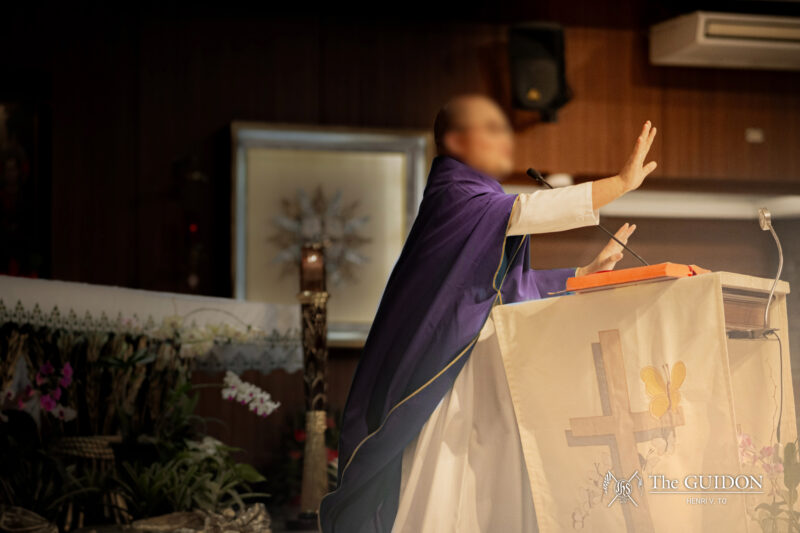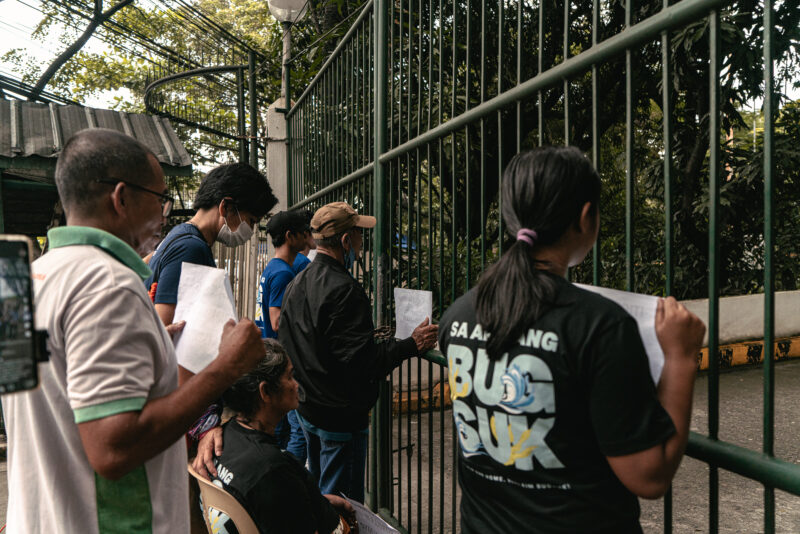The crowd is restless, anxious for the doors to finally open. Annoyed murmurs turn into grumbles, with the sternest of critics looking at their watches for the nth time.
With weeks spent filming on location and the pressure of post-production all under the bridge, Ang Panggagahasa Kay Fe (The Rapture of Fe) is now set to roll for the first time. But the film won’t show on the projector screen.
Meanwhile, director Alvin Yapan is on the verge of a nervous breakdown.
From Filipinas to folklore
The road to finishing Panggagahasa was not at all smooth for this Filipino professor by day, award-winning novelist and filmmaker by night. “The term is no longer stress. I feel numb,” says Alvin. “From defending the film to the Cinemalaya Panel, organizing the film shoots and post-production, all the way to selling the tickets. It’s just overwhelming.”
With this being his first feature-length film, Panggagahasa was quite a crash course for the director of short films.
“It was a major shift from short to feature length, both in terms of the stress levels and budget-wise,” says Alvin. “When I did Rolyo (a Cinemalaya award-winning short film), I did it for fun; people thought I was on vacation. This time it’s real. It involves a million pesos and you can’t just play with a million pesos.”
The story, written by Alvin himself, revolves around Fe, a balikbayan OFW trapped in an oppressive environment. Fe’s character is a powerful representation of the Filipino migrant worker—“a victim of panggagahasa, in every sense of the word”—bringing the reality of women’s struggles to the big screen.
Alvin admits to having a particular muse for Fe’s character. “I really wrote the script for Irma Adlawan, the queen of theater in the Philippines,” he says. “I have yet to see her play a truly substantial role in mainstream media… so I had to write a script that would showcase her art.”
Alongside the Filipina muse was the rebirth of Filipino folklore, which Alvin aimed to bring to the fore alongside the film’s multi-textured character interactions.
“I wanted to produce a fantasy film that would treat local lore with dignity,” he says. “On television, local folklore is always treated as the kontrabida, and the saviors of the shows, shameless The Lord of the Rings rip-offs. As a literature teacher, I wanted to make a statement.”
And he did. The film is an illustration of something uniquely and authentically Filipino, both in human relationships as well as in the mystical. As a noted online Filipino film critic, Richard Bolisay, says, “Ang Panggagahasa Kay Fe is too prominent to be ignored. It stands out, and it stands best.”
Still the nice guy
Together with his blossoming filmmaking career, Alvin deems himself, first and foremost, a writer. He can’t help but have the two overlap, his writing moving from novels to screenplays. Of course, he adds that these are two different artistic media.
“When you write a novel, you work with words,” says the Palanca multi-award winner. “You play with the tone…with the rhythm of sound so your readers can better appreciate the melody of the page. When it comes to film, you really have to create a visual language,” he says, with his main propensity in film being exactly that.
Despite all of his accolades, Alvin’s quiet demeanor is far removed from the stereotypical overbearing director. “As a director, he’s nice,” says executive producer Alembert Ang. “Too nice, actually,” adding that even their agent—producer of the award-winning Kinatay—joked that Alvin should have been more of a jerk on set.
“Everyone was getting along, which is rare in this business,” adds Alembert. “I never felt like I was working.”
Along with being the nice guy comes the support from everybody on the set. “Imagine making your own boss act, with you directing,” says Alemberg, referring to Jerry Respeto, the chair of the Filipino Department and one of many Ateneans involved with the movie. “People just volunteered when [Alvin] said he was going to do a film…It was absolutely amazing.”
Ariel Diccion, Filipino professor and assistant director, commends Alvin for his artistry and inclusiveness. “What’s brilliant about him is that it’s so clear what his vision is… he’s at the helm, but he recognizes it’s still a team effort. We truly felt included in the creative process.”
Curtain call
From day one, scene one, take one, all the way up to the final ‘picture lock,’ Alvin says that the film was, more than anything, a growing experience.
“My tolerance level is so high now. I feel I’m going to be a better, nicer teacher this semester because I won’t get angry as often in class,” he says, half joking, half wincing. “Everything that could have happened, happened in the making of this film, and I’m proud to say that I’m still here.”
Looking ahead at Alvin’s career in film, viewers can hope for an adaptation of a Filipino classic. “But no more Noli or Fili,” he says. “We feel responsible to the youth. They should be better acquainted with their literature, and maybe one of the ways to do this is to translate it into film.”
Now three weeks removed from that failure of a press screening, Alvin Yapan is once again nervous. The atmosphere is ripe with anticipation; the crowd, restless. But this time there are no annoyed murmurs or grumbling spectators—only applause from a standing crowd.
Ang Panggagahasa kay Fe has just been named the co-winner of the Jury Prize at the Cinemalaya film festival and, now, the only thing Alvin needs to be nervous about is finding the right words to say.
The inside scoop
The shooting is done and awards have been given out, but a movie lives on. Here are some details you may have missed in the film Ang Panggagahasa kay Fe.
Set in Ateneo
All scenes were filmed on location in Porac, Pampanga—save for one scene shot in the Ateneo high school football field. The change of location is unnoticeable, and the field is virtually unrecognizable.
Two-string soundtrack
The untrained ear may not realize that the score was produced by no more than the two strings of a tambuleleng (an ethnic instrument from Bukidnon) played by Filipino Professor Jema Pamintuan.
Haunted tree
Strange events surrounded the scene of three hanged women in this [in]famous Porac, Pampanga tree. Two of the actresses fell into mysterious accidents involving an epileptic shock and a traffic incident.






